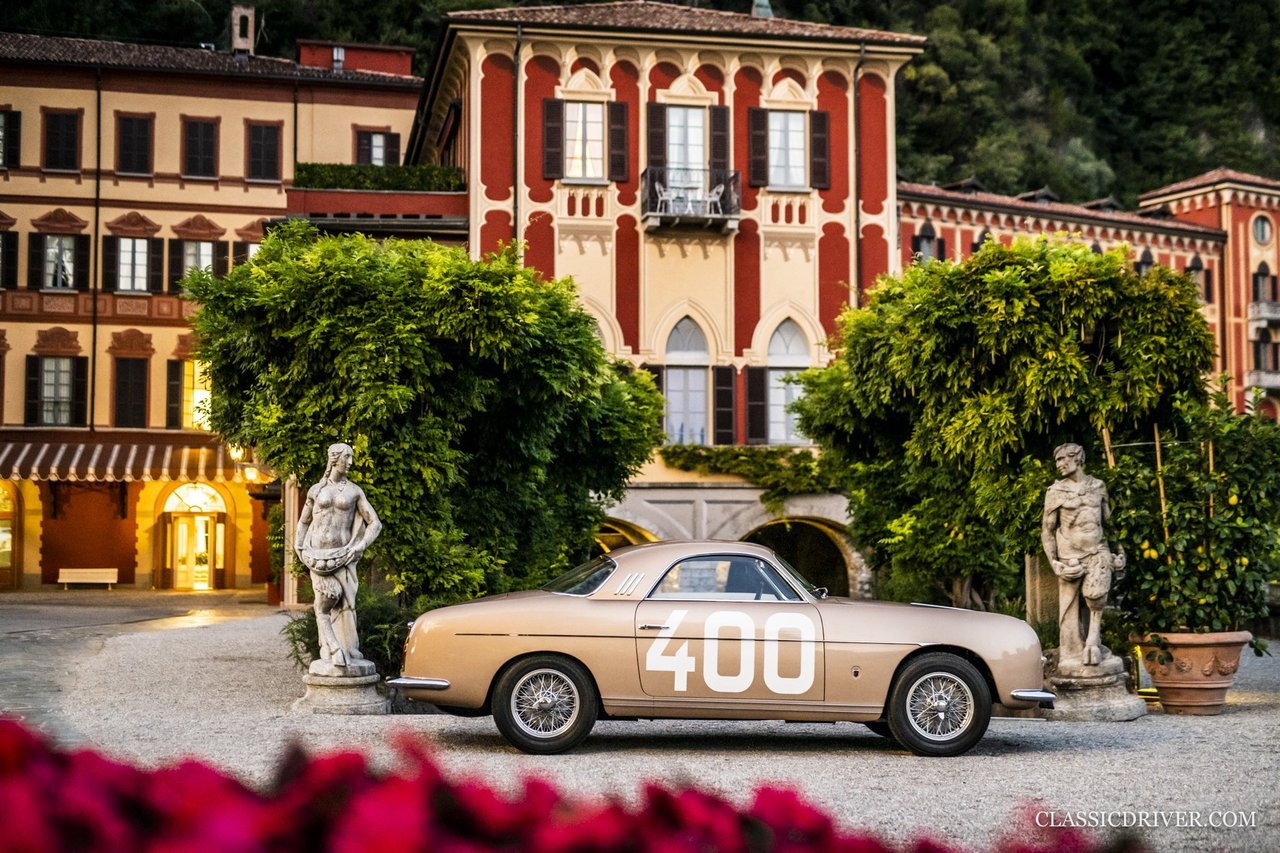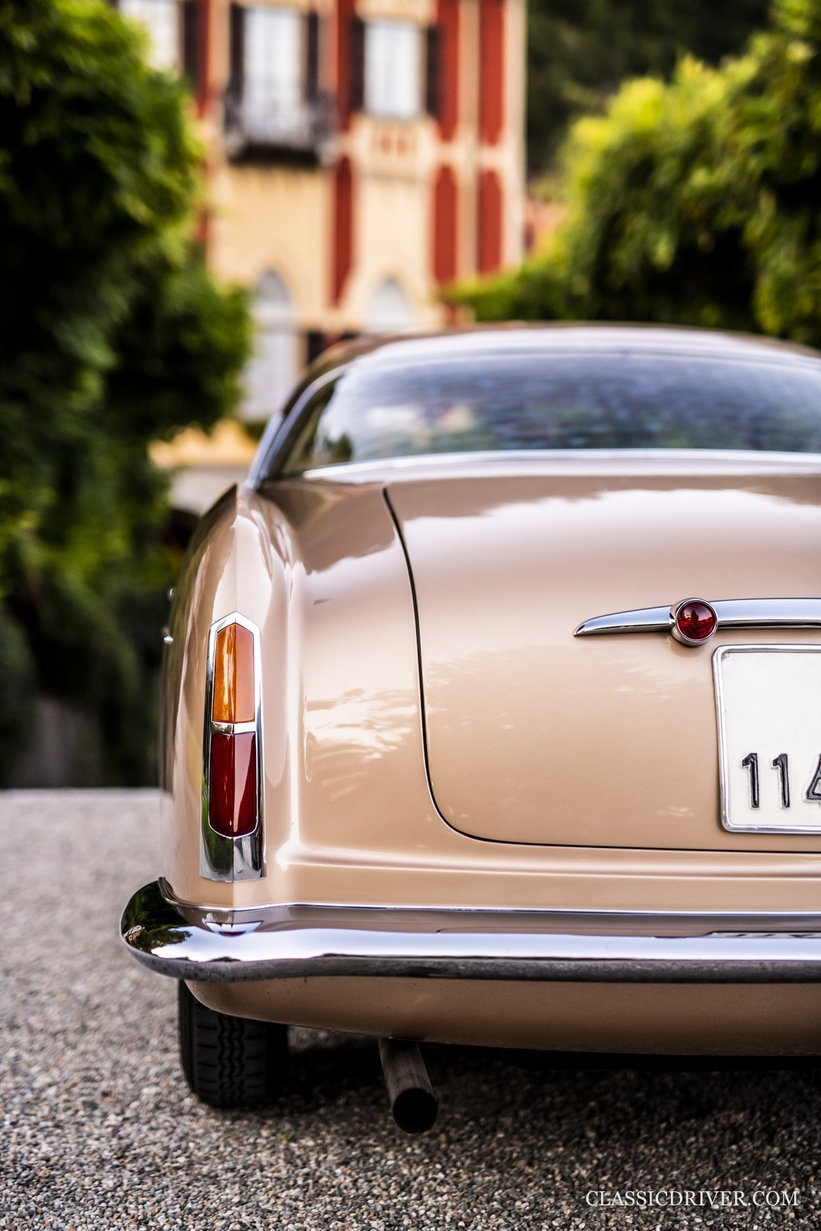

If you happened to be enjoying a gentle stroll along the shore of Lake Como yesterday, there's a possibility you'll have clocked the pugnacious front end of this distinctive coupe as it growled past during the Prelude Tour of classics ahead of this weekend's Concorso d'Eleganza Villa d'Este. But only true connoisseurs of Italian exotica are likely to have been able to pinpoint the model, because this is one of the rarest post-war Alfa Romeos in existence: the elusive 1900C Sprint Supergioiello with Ghia bodywork – a mere three of which are believed to have survived out of just 18 originally built.



The 1900 was Alfa's first stab at a production car post-WWII. It was developed during the years immediately after the conflict, when a battle-scarred Italy – with its decimated industries, impoverished population and new republican constitution – was struggling to get back on its feet. All the same, Alfa found the resources to make the 1900 sufficiently modern to form the basis of its future production philosophy and remain a viable model for the best part of a decade.


That meant it was not only the first car to emerge from the Portello plant without a separate chassis, but also the first Alfa to be built on a production line rather than being put together on an individual basis. Featuring a new 1,884cc twin-cam, four-cylinder engine that produced a handy 90 horsepower, the ‘regular’ 1900 was promoted as a practical, roomy and attractive car – if also relatively basic. But, Alfa being Alfa, it wasn't long before thoughts turned to giving it a sportier personality. Enter the SWB ‘C’ versions: five inches shorter and powered by an upgraded ‘TI’ engine with big valves, a higher compression ratio and twin Weber carburettors to provide an extra 10 horsepower and a few more revs (although no significant improvement on the standard 1900’s 105mph top speed).

The setup cried out for a more ‘interesting’ look than that of the regular four-door Berlina saloon – and several top coachbuilders obliged, with Pininfarina, Zagato and Touring all penning exciting designs to attract the more sporting driver. Arguably, however, it was Ghia that came up with the most eye-catching design of all: the Supergioiello, or ‘jewel’, pictured here.


The regular 1900 had already proven itself in high-profile races such as the Targa Florio and Stella Alpina, leading the marque to (justifiably) promote it as ‘the car that wins races’ – something that may have appealed to the original owner of this 1900C. Spanish enthusiast and ‘gentleman driver’ Gumersindo Garcia Fernandez took delivery in 1954, the year after the car was built, and immediately put it to work, entering numerous competitions under the auspices of the Real Automóvil Club de España, including the inaugural Rally de los Pirineos and November’s Subida a la Dehesa de la Villa, in which he bagged a ‘first in class’ with the Alfa.

Encouraged by his winter win, Fernandez upped the ante considerably by entering the 25th edition of the Rallye Monte-Carlo. Although he made it to the finish, his snow-driving skills might not have been quite up the mark, as he crossed the line in 211th place. Four more events in the more temperate climes of southern Europe followed, as well as an entry into San Sebastian’s Concurso de Elegancia. Having kept the Alfa for around three years, Fernadez sold it to another Spanish enthusiast, Salvador Ros, the president of Barcelona’s Club 600 and a decidedly handy driver in his own right. Again, he immediately took it to the start line, first in the 1958 Rallye of the Pyrenees, where he placed 10th. Another three competition seasons followed before Ros crashed the car, significantly damaging that distinctive, Ghia-designed nose section, which was replaced with one from a Touring design.


What happened during the following 30 years is unrecorded, but in 1990, the Supergioiello had the fortune to fall into the hands of classic-car historian and editor of the Antique Car Club magazine, Pablo Gemino. Having diligently delved into the car’s past, he unearthed the aforementioned competition history before passing it on to a new owner in Portugal. It was he who established its original bodywork configuration, having succeeded in finding images of the car competing with Fernandez at the wheel – and revealing it to be sufficiently significant to merit a full and comprehensive restoration that would return it to the original specification in which it had left the Alfa factory almost 50 years earlier. Undoubtedly one of the rarest and most distinctive iterations of the 1900C, this car remains just as practical and sporty as Alfa intended. So, if you missed it during the Prelude Tour, be sure to check it out during the Concorso this weekend – after all, there’s not much chance of seeing another one.
Photos: Rémi Dargegen for Classic Driver © 2021




































